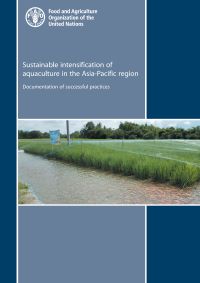Carbon footprint to move towards sustainability
4 March 2013 | Rattanawan Mungkung | 4929 views | .mp4 | 25.48 MB | Emerging Global Issues, Environment and Sustainability
Carbon footprinting (CF) has emerged as a measurement tool to evaluate the life cycle greenhouse gas (GHG) emissions associated with an organisation, product or service aiming to stimulate the reduction of GHGs and to communicate the information of carbon footprint to consumers via carbon labelling. CF assessment is rooted in Life Cycle Assessment (ISO 14040/44) concerning energy and raw materials consumption. To reduce GHG emissions associated with food consumption and production, CF labelling is being introduced for food products in several EU countries and in Asia, in an attempt to reflect the contribution to GHG emissions of consumption patterns and food choices. This mechanism is expected to facilitate the purchasing decision for low-carbon food products by consumers, thus stimulating the development of low-carbon production technology which could contribute to climate change mitigation. By informing and influencing key players along the whole food supply chain (i.e. producers, retailers and consumers), the carbon label strategy is expected to stimulate reduction of GHG emissions at both production and consumption levels.
Recent rapid growth in aquaculture production, especially in developing countries, has stimulated interest in GHG emissions from the sector. Aquaculture is of interest both because it is a major emitter of GHGs due to the intensive use of energy by aerators, and the crop-based/fisheries-based feed ingredients needed. The sector itself is also at high risk of adverse impacts from climate change.
A study of the carbon footprint of individual quick frozen (IQF) breaded shrimp was introduced and the standard PAS 2050 methodology described in outline. At present the PAS 2050-2: 2012 specification for assessment of greenhouse gas emissions from aquatic food products is under development, as well as Product Category Rules of Fisheries and Aquaculture Products in Thailand and Product Category Rules of Seafood Products in Japan.
The study pointed out some methodological considerations and offered practical recommendations to assist in standardisation. For example, close attention needs to be paid to establishing system boundaries, e.g. for frozen shrimp products, the energy used at point of sale should be included, but human labour such as for peeling shrimp should be excluded. To compare various shrimp products, weight can be used; but when comparing among aquaculture/fisheries products, the product unit could be a specific weight of whole body, edible protein or nutrient depending on the grouping of products with similar characteristics and through the stakeholder consultation process.
Carbon footprint has become a useful tool for GHG assessment and management for climate change mitigation, and is expected to increase in importance, assisting in identifying hot spots for improvement, evaluating performance of different farming systems, comparing new and current products, and selecting appropriate climate-friendly technologies. Comparative carbon footprint values can give an indication of green farming systems as well as climate-conscious products. Application of CF should be promoted in aquaculture and fisheries products to stimulate green food production system and green business.
Creative Commons Attribution.
